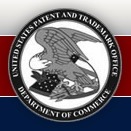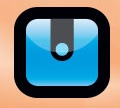Apple has been granted several patents by the US Patent & Trademark Office. Following is a summary of each.
Patent number 7975242 is for a portable multifunction device, method and graphical user interface for conference calling — in other words, the iPhone. Per the patent, in some embodiments, a portable multifunction device with a touch screen display performs a method that includes: displaying a phone call user interface on the touch screen display, wherein the phone call user interface includes: a first informational item associated with an active phone call between a user of the device and a first party, a second informational item associated with a suspended phone call between the user and a second party, and a merge call icon; upon detecting a user selection of the merge call icon, merging the active phone call and the suspended phone call into a conference call between the user, the first party, and the second party, and replacing the phone call user interface with a conference call user interface.
The conference call user interface includes: a third informational item associated with the conference call, and a conference call management icon. The inventors are Scott Forstall, Imran Chaudhri, Michael Matas, Marcel Van Os, Stephen O. Lemay, Patrick Lee Coffman, Elizabeth Caroline Furches and Greg Christie.
Patent number 7975028 is for the migration of data between two computers. That is, Apple’s Migration Assistant technology. The patent involves techniques and mechanisms that allow configuration information, applications and/or data to be transferred between computer systems in an automated, or partially automated, manner, which may allow for more efficient transfer as compared to manual transfer.
A source computer system may be coupled with a destination computer system directly via a wired or wireless communications channel. Data including, for example, user identification information, network settings, system settings, permissions and/or other data may be transferred from the source computer system to the destination computer system. The inventors are Christopher Ryan, John A. Vink and Jean-Pierre Ciudad.
Patent number 7974486 involves a plug-in architecture for exporting digital images. A method and apparatus for allowing applications to access edited image data from an image editing application are disclosed. When the user desires to export edited images, the user causes the image editing application to display a plug-in user interface (UI). The plug-in UI may allow the user to enter exporting parameters, although this is not required.
After the user selects an “export” button in the plug-in UI, the image editing application confirms with the plug-in on an image-by-image basis which of the images should be exported. The image editing application then generates an export version of the image. If necessary, the image editing application applies image adjustments to the master image to generate the export version. The image editing application then makes the export version available to the plug-in. Blake R. Seely is the inventor.
Patent number 7975028 is for a token passing technique for media playback devices, such as Apple’s various iOS devices and Macs. A digital rights management (DRM) system for distribution of digital content such as audio or video uses a token passing scheme to enhance security of the content from unauthorized access and use, including access by unauthorized players. The token is requested from the central content or DRM server by a host device such as a user’s computer, using security related information. The token is then passed to a media player associated with the host device, the token being encrypted using a key special to that particular player.
Upon receipt of the token, the player transmits back to the server certain related security information confirming receipt of the token and in return receives keys for decryption of the associated digital content. In the absence of proper passing of the token, player access to the content, or further access to other content, is denied. This also allows the player to communicate directly with the server for obtaining the keys. The inventors are Rainer Broderson, Jeffrey Robbin, Augustin J. Farrugia and Rod Schultz.
Patent number 7975028 involves a method and apparatus for providing link-local IPv4 addressing across multiple interfaces of a network mode. Embodiments of the invention provide link-local IPv4 addressing across multiple interfaces of a network-node. During operation, the network-node broadcasts an address resolution protocol (ARP) request packet on multiple interfaces which asks for the hardware address of a network node whose link-local IPv4 address is Y. In response, the network-node receives an ARP-reply packet on an interface from a target network-node.
If Y is present in the ARP cache and is associated with a different interface, the source network-node chooses a winner interface, and updates the ARP cache so that Y is associated with the winner interface. The network-node sends one or more contention-resolution packets on the loser interface to cause a loser network-node to choose another link-local IPv4 address for itself. Stuart D. Cheshire is the inventor.
Patent number 7975028 is for symbol encoding for tolerance to single byte error. The invention provides a method that protects symbol types by characterizing symbols as one of two types–DATA or NON_DATA, generating a symbol characterization bit, placing the symbol characterization bit at both ends of the symbol, and transmitting the symbol with the symbol characterization bits at both ends. Thus, a single byte error may affect a type bit in two consecutive symbols, and will affect one or the other of the type bits in a single symbol, but cannot affect both type bits in a single symbol. The inventors are Colin Whitby-Strevens and Jerrold Von Hauck.
— Dennis Sellers




